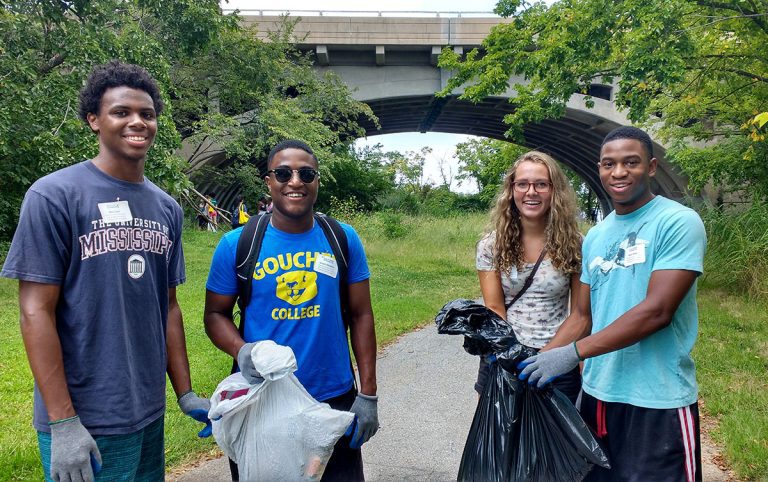We Deserve a Pollution Diet for the Bay AND our Local Waterways

My name is Tina Meyers and I just started two weeks ago at Blue Water Baltimore as the new Baltimore Harbor WATERKEEPER for Blue Water Baltimore. I am SUPER excited to be your new on-the-water advocate, and I can’t wait to get to know our supporters in more depth. However, there is an urgent issue that deserves our attention right now.
MDE has recently proposed to utilize the Bay-wide Pollution Diet (TMDL) model in lieu of issuing TMDLs to 139 of our Local Waterways.
The Chesapeake Bay TMDL provides a pollution diet for the entire Chesapeake Bay watershed (spanning 6 states and the District of Columbia). This diet is based on the Chesapeake Bay Model, which is basically a computer program that estimates the amount of pollution loads (nitrogen, phosphorus, and sediment) that various localities can discharge while still allowing the Bay to meet water quality standards.
In addition to the Bay-wide pollution diet, however, there are also hundreds of individual waterways which already have or are on the waiting list to receive their own local TMDL from the Maryland Department of the Environment (MDE). However, MDE, in its draft 2012 Integrated Report or 303(d) list of Impaired waterways, is proposing to rely on the Bay TMDL computer model to “check off” these 139 local waterways from the TMDL waiting list.
MDE is required to follow a statutory public participation process when creating each of these local pollution diets. They provide for a formal comment period where citizens with local expertise can provide site-specific information to help MDE create a more accurate and reality-based local TMDL. Citizens often provide MDE with water quality monitoring data and information on local pollution sources that MDE may or may not have known about.
For example, the Baltimore Harbor is impaired for both nitrogen and phosphorus and has its own TMDL for each that provides the various point sources (industries, wastewater treatment plants, etc.) and non-point sources (stormwater runoff) of that nutrient pollution. The Baltimore Harbor TMDLs also provide a “Wasteload Allocation” or amount of pollutant that each one of those sources can discharge while still keeping the Harbor healthy and compliant with water quality standards. And there are currently 139 local waterways or “segments” in Maryland, such as the Jones Falls here in Baltimore, that are impaired for nutrients and/or sediments but are still waiting for a local TMDL from MDE.

Baltimore Harbor WATERKEEPER, along with the other 11 Maryland WATERKEEPER programs, are concerned about MDE’s proposal, as it avoids the site-specific public participation process for the 139 local TMDLs and potentially relies on a large scale model which may not have the specificity to accurately address these small water segments.
Due to these concerns, we recently requested that MDE grant an additional public hearing on this issue and extend the public comment period for the Draft Integrated Report. MDE agreed to provide us with an informational meeting and a short extension—so I will keep you posted on our progress!
Pollution diets are a good thing, but it is imperative that we do not save the Bay at the expense of our local waterways. And it is equally important that MDE provide the public with its legal right to have a say in the development of TMDLs for their local waterways. Citizens have site-specific expertise that will not only strengthen the protection of that local waterway, but will strengthen the Bay-wide pollution diet from the bottom up.
Follow me on the Baltimore Harbor WATERKEEPER facebook page for updates on this and the other important projects I’m working on!
Nice “meeting” you all! 🙂

